Are you struggling to get your dog to come back to you when called, no matter the distractions? Mastering the recall command is crucial for your dog's safety and your peace of mind.
With simple yet effective methods, you can transform your dog into a responsive and obedient companion.
Stay tuned to uncover the key strategies that will help you achieve a reliable recall skill effortlessly, ensuring a harmonious relationship between you and your furry friend.
Key Takeaways
- Use your pup's favorite treats and a clicker to reinforce the recall behavior.
- Start training in a familiar environment and gradually increase distance.
- Consistency and patience are key to generalizing the recall cue effectively.
- Practice the come cue on-leash to ensure safety and reinforce good behavior.
Importance of Recall Training
Recall training is essential for ensuring your dog's safety and well-being in various situations, especially during public outings or off-leash scenarios. When your furry friend knows to come when called, you can prevent potential dangers like running into traffic or getting lost.
By teaching your dog a reliable recall, you build a strong foundation for a trusting relationship. Practice in different environments and gradually increase distractions to solidify this crucial skill. Consistency is key; reinforce good behavior with treats, praise, and playtime.
Selecting the Right Treats
When training your dog, it is essential to carefully select treats that motivate and excite them to ensure successful learning. Choose treats that your dog loves, such as cut-up hot dogs, cheese, training treats, or even veggies. Opt for small treats that are easy to provide and can be quickly consumed during training sessions. As your training progresses, consider switching up the treats to maintain your dog's interest and motivation. Here is a table summarizing key points for selecting the right treats:
| Key Points for Treat Selection |
|---|
| Choose your dog's favorite treats |
| Opt for small, easy-to-provide treats |
| Switch treats as training progresses |
| Ensure treats are motivating and exciting |
| Use treats that your dog loves |
Using a Marker for Reinforcement
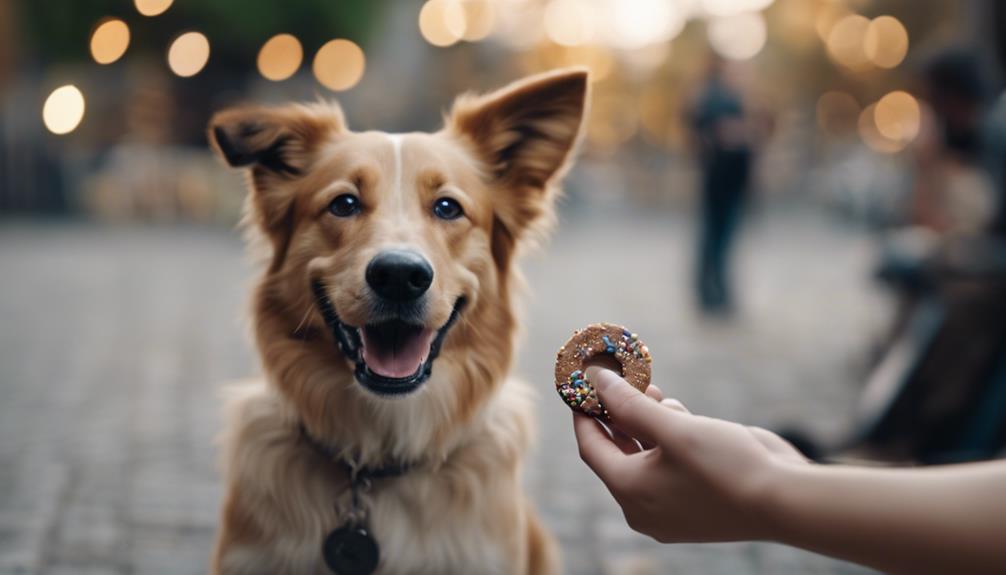
When training your dog, using a marker, such as a clicker, is an effective way to signal the exact moment your dog behaves correctly, reinforcing positive actions instantly.
Click or mark behavior immediately after the desired action to let your dog know they did something right. This clear communication helps your pup understand what behavior leads to rewards.
The clicker serves as a bridge between the correct behavior and the treat, making the training process more efficient. By consistently using the marker, you create a strong association between the behavior and the reward.
Remember to keep the timing precise to ensure your dog can easily connect their actions with the positive reinforcement provided.
Steps to Teach Recall
To start teaching your dog recall effectively, begin by reinforcing moments of offered attention with a click and a treat.
Here are three steps to help you teach your dog to come when called:
- Click for attention to reinforce moments of offered attention.
- Toss a treat and click for returning to encourage your dog to come back.
- Add the verbal cue 'come' while clicking and treating.
Making Training Fun and Engaging
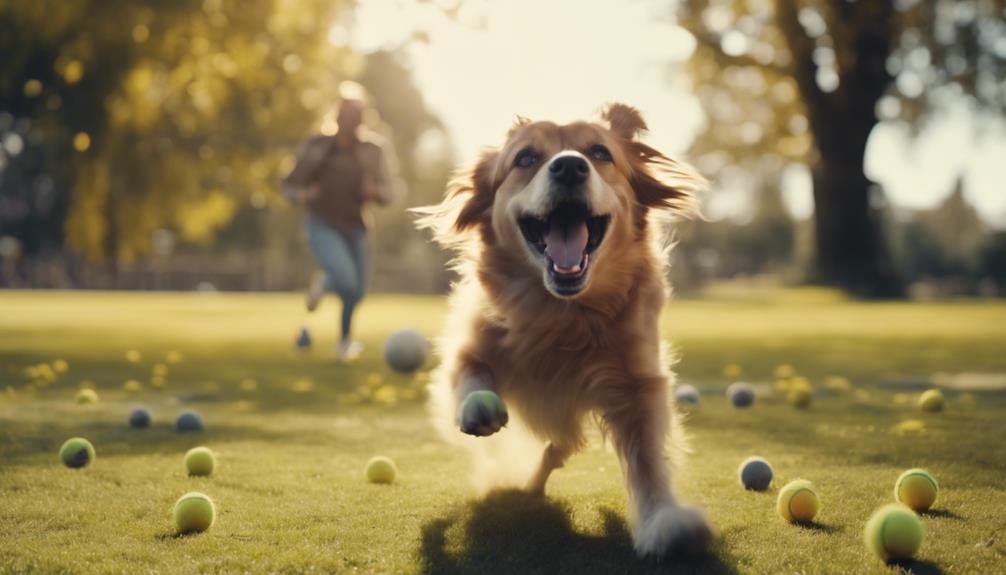
When making training fun and engaging for your dog, incorporate interactive games and activities that reinforce desired behaviors. Use toys, treats, and enthusiasm to make the training sessions exciting.
Consider playing hide and seek with your dog, using treats or their favorite toy as a reward when they find you. Additionally, engage in short training sessions to prevent boredom and keep your dog focused.
Incorporate playful elements like running around or using obstacles for them to navigate through. Remember to keep a positive attitude and celebrate each successful recall with praise and rewards.
Reinforcing Attention and Avoiding Mistakes
Consider using a variety of treats to reinforce attention and prevent common mistakes during recall training with your dog. Here are three tips to help you reinforce attention and avoid mistakes:
- Use high-value treats that your dog finds irresistible to maintain focus and motivation during training sessions.
- Avoid repeatedly calling your dog's name without any follow-up action, as this can dilute the effectiveness of the recall cue.
- Be consistent with your training methods and avoid scolding or punishing your dog for not responding promptly, as this can create negative associations with the recall command.
Generalizing the Recall Cue
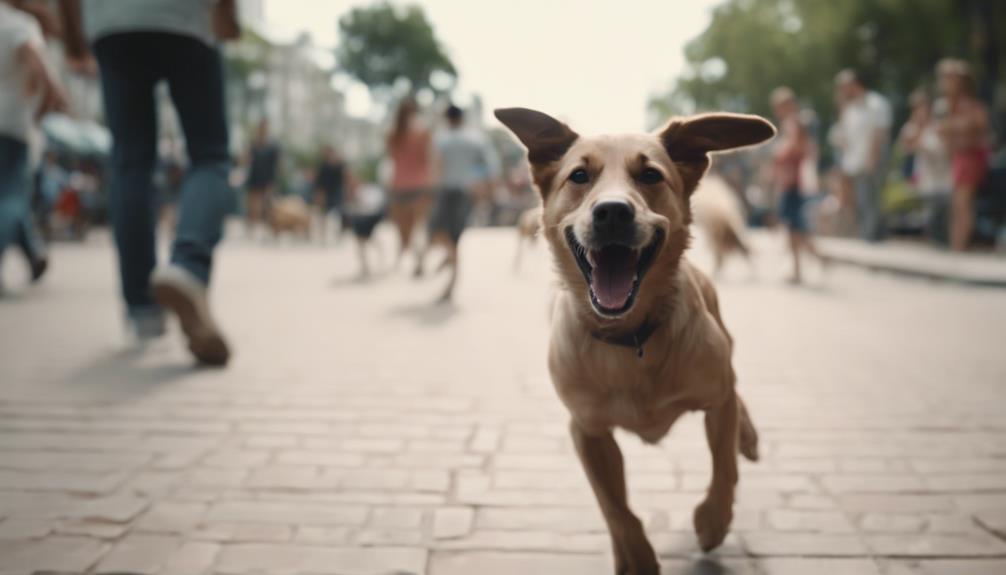
Begin practicing the recall cue in various environments to ensure your dog responds reliably in any situation. Work on the cue indoors, outdoors, at the park, on walks, and in different rooms of your home. Start in quiet places and gradually introduce distractions to test your dog's responsiveness.
Vary the distance between you and your dog to help them understand that the recall cue applies regardless of proximity. Practice in locations where your dog has succeeded before and gradually move to new areas. This helps your dog generalize the cue, associating it with coming to you no matter the setting.
Consistent practice in diverse environments will reinforce your dog's understanding of the recall command.
Starting Training in a Familiar Environment
To ensure successful recall training, start by initiating the training sessions in a familiar environment where your dog feels comfortable and at ease. This familiarity will help your dog focus on learning the recall command without unnecessary distractions.
Here are three tips for starting training in a familiar environment:
- Choose a quiet and familiar space like your backyard or a quiet room indoors to begin training.
- Ensure there are minimal distractions such as other pets, loud noises, or unfamiliar smells.
- Use your dog's favorite treats or toys to create a positive association with the training environment and make learning more enjoyable for your furry friend.
Gradually Introducing Distractions
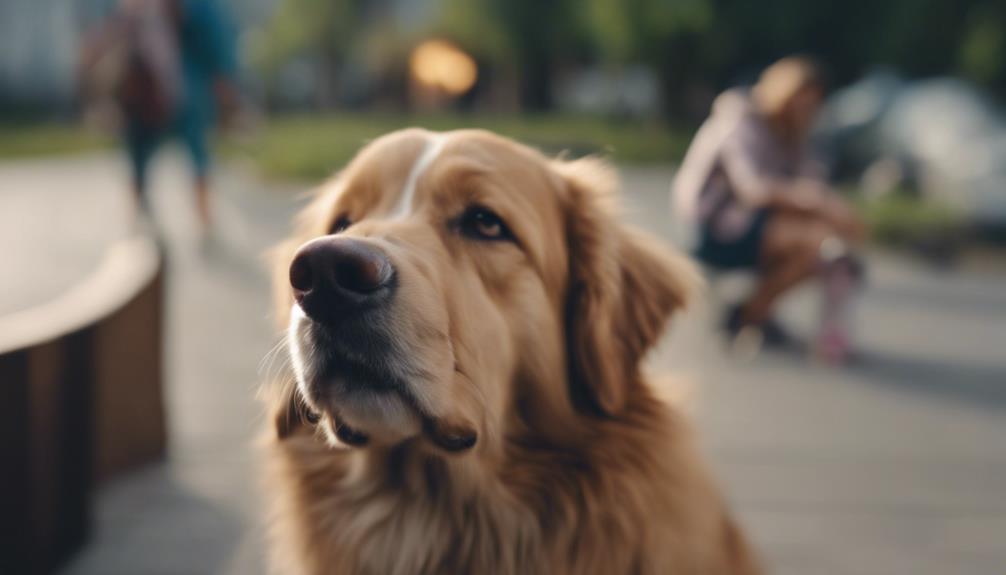
When introducing distractions during recall training with your dog, gradually increase the level of difficulty to solidify their response in various environments.
Start by practicing in a quiet place, then slowly add mild distractions like a person walking by or a gentle noise.
As your dog becomes more reliable, progress to busier areas with more stimuli, such as a park with other dogs playing. Remember to maintain your dog's focus by using high-value treats and reinforcing good behavior with praise.
Consistency With Cues and Markers
Maintain consistency with your cues and markers throughout your dog's recall training to reinforce desired behaviors effectively. Consistency is key in helping your dog understand what's expected of them.
Here are three essential tips to ensure consistency in your training:
- Use the same verbal cue: Whether it's 'come,' 'here,' or any other word you choose, stick to using the same command every time you call your dog.
- Consistent use of the marker: Whether you use a clicker or a specific word as a marker, ensure you use it consistently to signal the correct behavior.
- Timing is crucial: Mark and reward the desired behavior immediately to reinforce the connection between the action and the reward.
Incorporating Positive Reinforcement
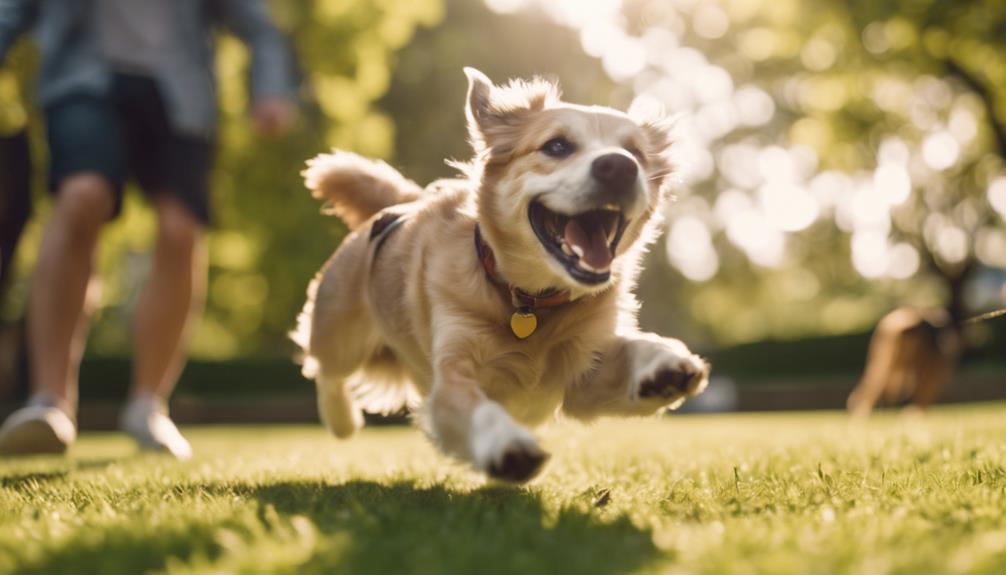
Consider using a variety of rewards such as treats, praise, and playtime to reinforce your dog's positive behavior during recall training.
When your pup comes to you promptly after being called, immediately reward them with their favorite treat, a cheerful 'good dog,' or an engaging play session.
These positive reinforcements help your dog associate coming when called with a pleasant experience, making them more likely to repeat the behavior.
By consistently rewarding your dog for responding to the recall cue, you're reinforcing the desired behavior and strengthening the bond between you and your furry friend.
Practicing the Come Cue On-Leash
To effectively practice the come cue on-leash, ensure that your dog is wearing a comfortable and secure leash and collar. Here are three key steps to help you practice the come cue effectively:
- Choose a Quiet Location: Begin in a quiet area with minimal distractions to set your dog up for success.
- Use High-Value Treats: Select treats your dog adores to motivate them to come to you eagerly.
- Start with Short Distances: Begin practicing the come cue at a short distance from your dog, gradually increasing the distance as they become more reliable in their response.
Safety Considerations for Recall Training
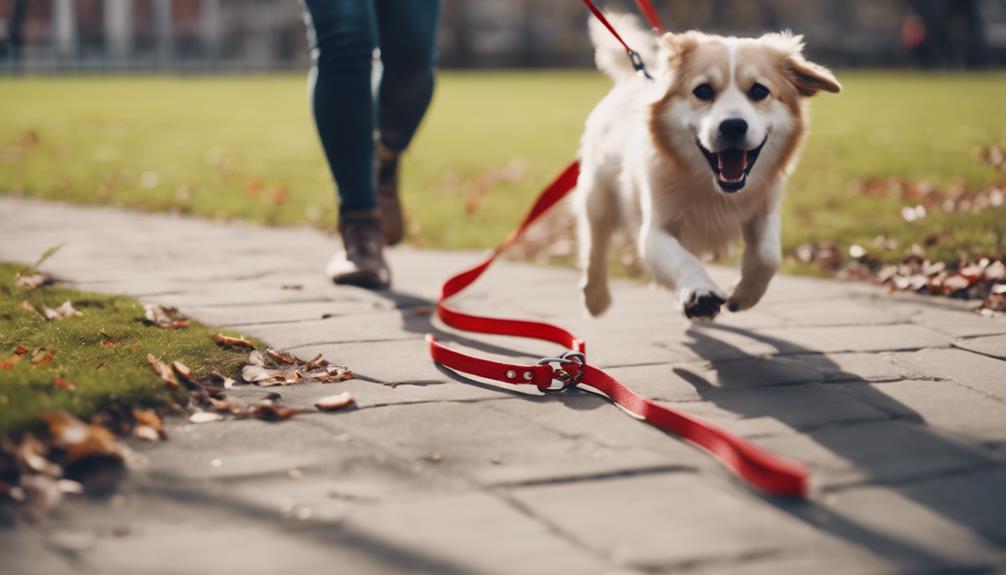
For effective recall training, prioritize safety by ensuring your training environment is secure and free of potential hazards. This means removing any items that could harm your dog or cause distractions during training sessions. Check for sharp objects, toxic plants, or small items that your dog might ingest.
Additionally, make sure the training area is enclosed to prevent your dog from running off. Always supervise your dog during recall training to prevent accidents. Consider using a long line or leash for added safety, especially when training outdoors.
Ensuring Understanding in Various Situations
When teaching your dog recall, it's essential to ensure they understand and respond to the cue in various situations to promote reliable obedience. Here are three key tips to help your pup grasp the recall cue effectively:
- Practice in Different Environments: Train your dog in various settings, such as your backyard, a park, or even indoors, to reinforce their understanding of the recall cue regardless of the location.
- Introduce Distractions Gradually: Start with minimal distractions and gradually increase them as your dog becomes more proficient at responding to the recall cue, ensuring they can focus amidst different temptations.
- Involve Different Family Members: Have different family members practice the recall cue with your dog to ensure they respond consistently to the cue from everyone in the household.
Conclusion
Now that you've learned the essential steps to teach your dog to come when called, remember to be patient and consistent in your training efforts. By using positive reinforcement, selecting the right treats, and making training fun, you can help your furry friend master this crucial skill.
With practice and dedication, you'll soon enjoy a strong bond with your dog and the peace of mind knowing they'll come when called in any situation. Keep up the great work and enjoy the journey of training your loyal companion!




